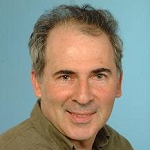Exclusive Feature Papers of Quantum Reports
A special issue of Quantum Reports (ISSN 2624-960X).
Deadline for manuscript submissions: closed (31 August 2022) | Viewed by 107880
Special Issue Editors
Interests: optoelectronics; design; modeling; growth; characterization (optical, electrical, and structural); fabrication; packaging, and measurements of quantum devices; semiconductor lasers; photodetectors; focal plane arrays; QWIP, QDWIP, from deep UV (200 nm), up to THZ (300 microns)
Special Issues, Collections and Topics in MDPI journals
Interests: foundations; measurement and decoherence; quantum-to-classical transition; open systems; quantum information
Special Issues, Collections and Topics in MDPI journals
Interests: quantum optics; quantum information; theoretical physics; quantum simulations; trapped ion physics; superconducting circuits; entanglement classification; entanglement generation; quantum biomimetics; artificial intelligence; machine learning; embedding quantum simulators; penning traps; quantum photonics
Special Issues, Collections and Topics in MDPI journals
Interests: foundations of quantum theory; mutually unbiased bases; uncertainty relations; Gleason's theorem; quantum state reconstruction; concepts of chaos and of integrability in quantum theory; PT-symmetry
Interests: foundations of quantum mechanics; two-state vector formalism; quantum measurements
Special Issues, Collections and Topics in MDPI journals
Interests: density functional theory; computational chemistry; electronic structure; quantum chemistry; DFT calculations; molecular structure; conceptual density functional theory; chemical bonding
Special Issues, Collections and Topics in MDPI journals
2. Interdepartmental Center “E. Piaggio” University of Pisa, Diotisalvi, 2, 56122 Pisa, Italy
Interests: chemo-mechanical properties of biomaterials; modeling of electro-chemo-mechanical kinetics of bi-phasic materials near and far from equilibrium; modeling of ultrasonic wave propagation in hydrogels and soft natural tissues; out of equilibrium kinetics and irreversible dynamics; matter self-assembling; quanutm chaos and irreversibility; quantum to classical transition; quantum gravity
Interests: cavity optomechanics; quantum optical response; topological insulator; topological quantum computation; topological photonics; cavity quantum electrodynamics; quantum information processing
Special Issues, Collections and Topics in MDPI journals
Special Issue Information
Dear Colleagues,
We are pleased to announce a new Special Issue entitled “Exclusive Feature Papers of Quantum Reports”, This is a collection of important high-quality papers (original research articles or comprehensive review papers) published in open access format by Editorial Board Members or prominent scholars invited by the Editorial Office and the Guest Editors. This Special Issue aims to discuss new knowledge or new cutting-edge developments in the quantum science research field through selected works, in the hope of making a great contribution to the community. We intend for this issue to be the best forum for disseminating excellent research findings as well as sharing innovative ideas in the field.
Prof. Dr. Manijeh Razeghi
Prof. Dr. Lajos Diósi
Prof. Dr. Lucas Lamata
Dr. Stefan Weigert
Prof. Dr. Lev Vaidman
Prof. Dr. Henry Chermette
Prof. Dr. Piero Chiarelli
Prof. Dr. Hong-Fu Wang
Guest Editors
Manuscript Submission Information
Manuscripts should be submitted online at www.mdpi.com by registering and logging in to this website. Once you are registered, click here to go to the submission form. Manuscripts can be submitted until the deadline. All submissions that pass pre-check are peer-reviewed. Accepted papers will be published continuously in the journal (as soon as accepted) and will be listed together on the special issue website. Research articles, review articles as well as short communications are invited. For planned papers, a title and short abstract (about 100 words) can be sent to the Editorial Office for announcement on this website.
Submitted manuscripts should not have been published previously, nor be under consideration for publication elsewhere (except conference proceedings papers). All manuscripts are thoroughly refereed through a single-blind peer-review process. A guide for authors and other relevant information for submission of manuscripts is available on the Instructions for Authors page. Quantum Reports is an international peer-reviewed open access quarterly journal published by MDPI.
Please visit the Instructions for Authors page before submitting a manuscript. The Article Processing Charge (APC) for publication in this open access journal is 1400 CHF (Swiss Francs). Submitted papers should be well formatted and use good English. Authors may use MDPI's English editing service prior to publication or during author revisions.











